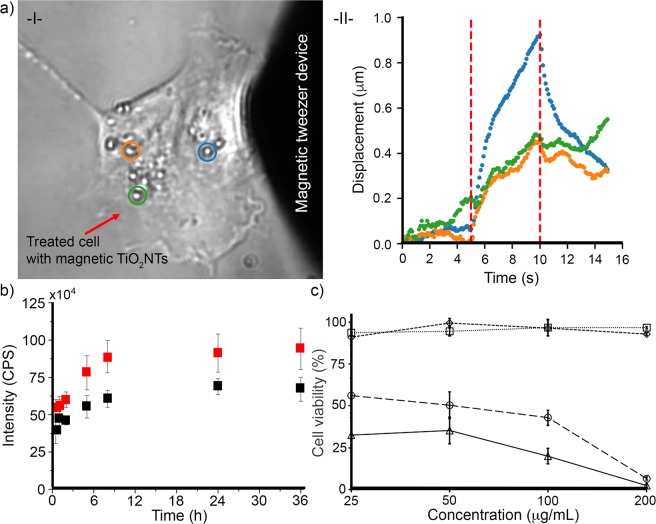Figure 4.
(a) Displacement of the magnetic TiO2NTs internalized in a single HeLa cell by employing magnetic force, -I- a representative light microscopic image of a treated cell and -II- measured displacement of representative magnetic TiO2NTs (indicated by blue, orange, and green cycles). Red dashed lines (at 5 and 10 sec) show the period that the magnetic tweezer device was active. (b) Cumulative camptothecin release profiles from camptothecin-loaded magnetic TiO2NTs (black squares) and camptothecin-loaded TiO2NTs (red squares). Release medium: PBS, pH 7.4, T = 37 °C. (c) Effects of anticancer camptothecin delivery, using magnetic TiO2NTs under the influence of a gradient magnetic field. HeLa cells incubated for 30 min with nanocarriers under the influence of a static gradient magnetic field were thoroughly washed in order to eliminate the unbound nanocarriers and then incubated with fresh cell culture medium (without nanocarriers) for 72 h. Cell viability of HeLa cells treated with camptothecin-loaded magnetic TiO2NTs (Δ) and empty magnetic TiO2NTs (□) under the influence of a gradient magnetic field, as well as camptothecin-loaded magnetic TiO2NTs (◯) and empty magnetic TiO2NTs (◊) without employing the gradient magnetic field were measured after 72 h of incubation (T = 37 °C, 5% CO2).

